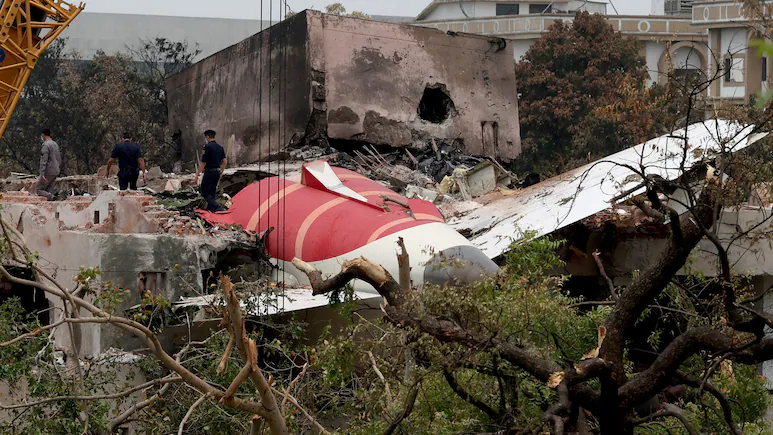Both Engines Failed Moments After Takeoff: Preliminary Air India Crash Report

New Delhi:
A preliminary investigation into the Air India Dreamliner crash that occurred on June 12 in Ahmedabad confirms a chilling detail: both engines failed just seconds after the aircraft became airborne.
According to the Aircraft Accident Investigation Bureau (AAIB), the Boeing 787-8 experienced a sudden shift in its fuel control switches—from ‘RUN’ to ‘CUTOFF’—shortly after takeoff. This cut fuel supply to both engines, resulting in a complete power loss.
The crash, which claimed at least 270 lives, including nearly everyone onboard, is now under deep scrutiny as investigators try to understand why the switches were disengaged in such rapid succession.
In the cockpit voice recording recovered from the wreckage, one pilot is heard asking, “Why did you cutoff?” to which the other responds, “I didn’t.”
This critical moment, when the engines were suddenly starved of fuel, is expected to be a primary focus for the inquiry going forward.
The report, released just after 1 am Saturday, also confirmed that the Ram Air Turbine (RAT)—a device that deploys during power failure—was activated immediately after liftoff. Footage from airport surveillance shows the RAT coming down as the plane struggled to gain altitude.
“No notable bird activity was seen near the flight path,” the report states. “The aircraft began to lose altitude before it could even clear the airport boundary.”
Data from the flight’s black box (Enhanced Airborne Flight Recorder) showed that although both switches were eventually moved back to the ‘RUN’ position, only Engine 1 showed any recovery. Engine 2 failed to regain stable power despite multiple fuel reintroductions.
Aircraft Configuration Was Normal
The Dreamliner was in the air for just 32 seconds, traveling only 0.9 nautical miles before it crashed into the BJ Medical College hostel near the airport. The accident occurred at 1:39 pm.
While initial findings suggested the thrust levers were near idle, flight recorder data confirmed they were actually in the forward position up until the moment of impact. Both fuel control switches were also in the ‘RUN’ position at that time.
Contrary to early rumors, investigators confirmed the flap setting was at a standard five degrees and the landing gear was still down—both typical conditions for takeoff.
No Early Indications of Sabotage
The AAIB also reported no immediate signs that the crash was caused by sabotage.
However, the report highlights a 2018 advisory from the US Federal Aviation Administration (FAA) that warned operators of a potential issue with fuel control switch locks. The advisory stemmed from incidents involving Boeing 737 aircraft, where locking mechanisms were found disengaged.
“The issue wasn’t considered severe enough to trigger a mandatory directive,” the report notes.
Air India acknowledged it had not performed the optional inspections since the FAA’s notice was not mandatory. Maintenance logs revealed that the throttle control module had been replaced on the crashed aircraft (registration VT-ANB) in both 2019 and 2023, but there was no evidence that those changes were related to fuel switch issues.
“No defects involving the fuel control switch were recorded on VT-ANB since 2023,” the report added.


